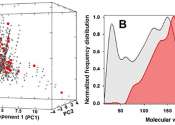Upcycled plastic membrane helps clean up waste
Plastic waste can be used as a raw material for making high performance porous membranes. These could then be used in the chemical industry for the energy-efficient separation of complex chemical mixtures or to clean up waste ...







